When it comes to choosing the perfect family vehicle, two models that stand out in the current automotive landscape are the Mercedes B-Klasse and the VW Taigo. Each offers its unique blend of features, aesthetics, and technical performance. But how do they measure up against each other? Let’s dive into a detailed comparison to help you make an informed decision.
Mercedes B Class vs VW Taigo – Który model sprawdza się lepiej na co dzień?
Codzienna jazda, rodzina czy dłuższe trasy – tu widać różnice.
Sprawdź, czy Mercedes B Class czy VW Taigo lepiej pasuje do Twojego stylu życia.
Design and Dimensions
Starting with the design, the Mercedes B-Klasse is an MPV known for its spaciousness and practicality. It measures 4419 mm in length, 1796 mm in width, and stands 1562 mm tall. With a trunk capacity of 455 liters, it excels in transporting both passengers and luggage.
The VW Taigo, on the other hand, is a stylish SUV with a more compact feel. It stretches 4266 mm in length and boasts a width of 1757 mm and a height of 1518 mm. Although it has a slightly smaller trunk capacity of 440 liters, its sporty design may appeal to a younger demographic looking for functionality without sacrificing style.
Engine Options and Performance
In terms of engine options, the Mercedes B-Klasse offers a variety of powertrains, including petrol MHEV, diesel, and plug-in hybrid options. The power ranges from 116 HP up to a robust 238 HP, and it features a selection of transmissions, including dual-clutch automatic and traditional automatics. The B-Klasse excels with a maximum speed of 250 km/h and impressive acceleration, reaching 0-100 km/h in as little as 6.5 seconds.
The Taigo, while limited to petrol engines, provides a range of 95 HP to 150 HP. With manual or dual-clutch automatic transmission options, it offers decent performance, but not quite to the level of the B-Klasse, with 0-100 km/h times ranging from 8.2 to 11.1 seconds and a top speed of 212 km/h. The Taigo shines in fuel efficiency, with consumption figures around 5.4 to 5.8 L/100km.
Innovations and Technology
Mercedes-Benz is renowned for its innovative technology, and the B-Klasse is no exception. It comes equipped with the latest MBUX infotainment system, featuring voice activation, a user-friendly touchscreen interface, and connectivity options like Apple CarPlay and Android Auto. The array of driver assistance features includes adaptive cruise control and lane-keeping assist, emphasizing safety and driver comfort.
The VW Taigo also incorporates modern technology, boasting a digital cockpit and an infotainment system that is both intuitive and responsive. While it does offer some driver assistance features, it may not match the extensive options found in the B-Klasse, particularly in premium safety tech.
Efficiency and Environmental Impact
The Mercedes B-Klasse features a commendable range of efficiencies, with various models achieving as low as 0.8 L/100km in hybrid mode and CO2 emissions starting at 134 g/km. This enables environmentally-conscious driving without sacrificing performance.
The Taigo, while slightly lower in performance specs, offers impressive fuel efficiency, making it an excellent option for daily commuters. With CO2 emissions ranging from 123 to 132 g/km, it appeals to those looking to reduce their carbon footprint.
Pricing and Value
Pricing for the B-Klasse generally reflects its premium positioning, offering high-end features and luxury finishes. The investment, however, is justified by its extensive capabilities and brand prestige.
The VW Taigo represents a more budget-friendly option without compromising too much on style and technology. It’s ideal for young families or first-time car buyers looking for a practical yet modern SUV.
Conclusion
In the battle between the Mercedes B-Klasse and the VW Taigo, the choice largely comes down to personal preference and specific needs. If luxury, advanced technology, and performance are your top priorities, the B-Klasse is undoubtedly the standout option. Conversely, for those seeking a stylish yet cost-effective solution, the Taigo shines with its modern appeal and efficient engine offerings.
Ultimately, both models serve their respective audiences well, proving that whether you opt for the practical luxury of the B-Klasse or the vibrant design of the Taigo, you can’t go wrong.
Szczegóły techniczne: konkretne różnice między modelami
Koszty i zużycie
Cena i efektywność to kluczowe czynniki przy zakupie auta – właśnie tu często widać największe kontrasty.
VW Taigo ma decydowany przewagę cenową – jego cena zaczyna się od 100600 zł, podczas gdy Mercedes B Class kosztuje 169800 zł. Różnica wynosi około 69214 zł.
W spalaniu również widać różnice: Mercedes B Class zużywa 2.50 L i jest tym samym wyraźny oszczędniejszy niż VW Taigo, który spala 5.30 L. To około 2.80 L różnicy na 100 km.
Silnik i osiągi
Pod maską widać, który model jest bardziej sportowy i kto ma lepszy start.
Pod względem mocy silnika Mercedes B Class ma oczywisty przewagę – 238 KM zamiast 150 KM. To różnica około 88 KM KM.
W przyspieszeniu 0–100 km/h Mercedes B Class jest zauważalny szybszy – 6.50 s wobec 8.20 s. Różnica wynosi około 1.70 s sekundy.
Pod względem prędkości maksymalnej Mercedes B Class jest lekko lepszy – osiąga 250 km/h, podczas gdy VW Taigo kończy na 212 km/h. Różnica to około 38 km/h.
Różnica widoczna jest również w momencie obrotowym: Mercedes B Class ciągnie wyraźny mocniej – 450 Nm wobec 250 Nm. Różnica to około 200 Nm.
Przestrzeń i praktyczność
Poza mocą liczy się też wygoda i funkcjonalność. Tu decyduje się, który samochód jest bardziej praktyczny i wszechstronny.
Oba samochody oferują miejsce dla 5 osób.
Pod względem masy własnej VW Taigo jest w niewielkim stopniu lżejszy – 1229 kg wobec 1405 kg. Różnica to około 176 kg kg.
Pod względem pojemności bagażnika Mercedes B Class oferuje ledwo zauważalny więcej miejsca – 455 L wobec 440 L. To różnica około 15 L litrów.
W maksymalnej pojemności ładunkowej Mercedes B Class wypada oczywisty lepiej – do 1540 L, czyli o około 318 L więcej niż VW Taigo.
Pod względem ładowności Mercedes B Class wypada w niewielkim stopniu lepiej – 550 kg wobec 457 kg. Różnica to około 93 kg kg.
Kto wygrywa pojedynek?
Mercedes B Class okazał się dominuje w porównaniu i tym samym zdobywa tytuł DriveDuel Champion!
W tym porównaniu Mercedes B Class to bardziej wszechstronny wybór.

Mercedes B Class
Mercedes B Class
Mercedes Klasy B to praktyczny kompakt, który traktuje codzienność z odrobiną luksusu — przestronny, wygodny i zaprojektowany tak, żeby życie rodzinne było mniej chaotyczne. Dla tych, którzy chcą funkcjonalności hatchbacka połączonej z komfortem i elegancją, to rozsądna propozycja, która nie udaje sportowego coupe, ale nadrabia klasą i użytecznością.
szczegóły @ group-media.mercedes-benz.com
@ group-media.mercedes-benz.com
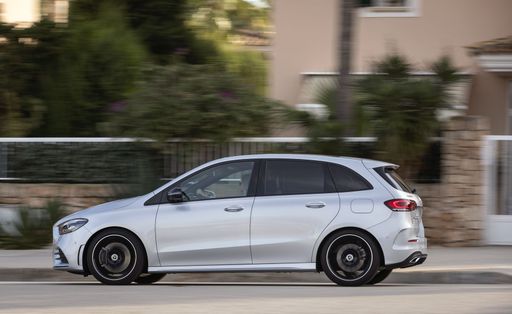 @ group-media.mercedes-benz.com
@ group-media.mercedes-benz.com
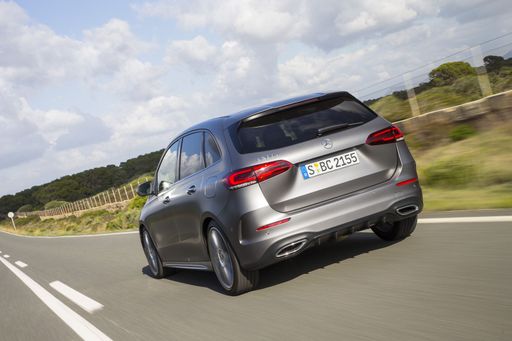 @ group-media.mercedes-benz.com
@ group-media.mercedes-benz.com
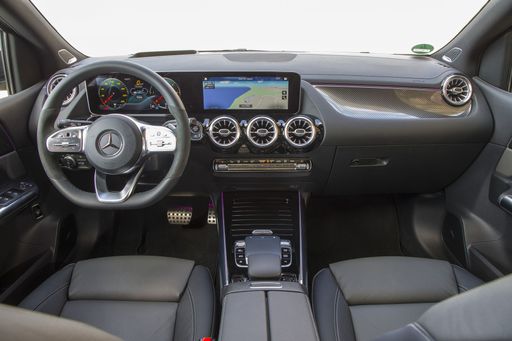 @ group-media.mercedes-benz.com
@ group-media.mercedes-benz.com
 @ group-media.mercedes-benz.com
@ group-media.mercedes-benz.com
VW Taigo
VW Taigo to kompaktowy crossover, który stawia na miejską elegancję i odrobinę sportowego charakteru, łącząc opływową sylwetkę coupe z praktycznością hatchbacka. Dla kupującego to rozsądna propozycja — wygodny w codziennym użytkowaniu, z nowoczesnym wnętrzem i kilkoma przyjemnymi smaczkami, które sprawiają, że łatwo się w nim zakochać.
szczegóły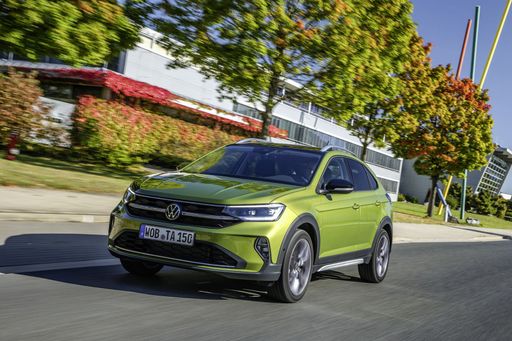 @ Volkswagen
@ Volkswagen
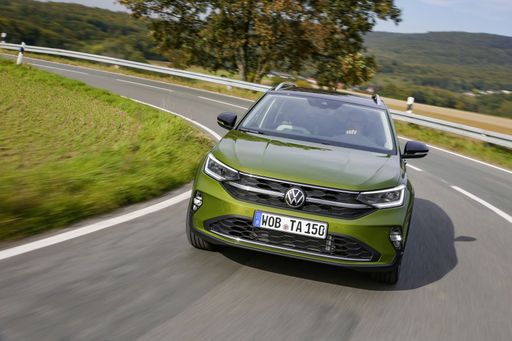 @ Volkswagen
@ Volkswagen
 @ Volkswagen
@ Volkswagen
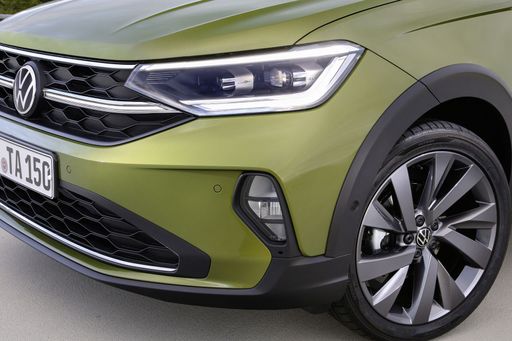 @ Volkswagen
@ Volkswagen
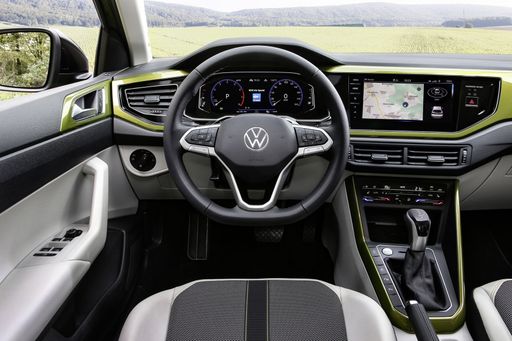 @ Volkswagen
@ Volkswagen

|

|
|
|
|
Koszty i Zużycie |
|
|---|---|
|
Cena
169800 - 268900 zł
|
Cena
100600 - 160600 zł
|
|
Zużycie L/100km
2.5 - 6.9 L
|
Zużycie L/100km
5.3 - 5.8 L
|
|
Zużycie kWh/100km
-
|
Zużycie kWh/100km
-
|
|
Zasięg elektryczny
83 km
|
Zasięg elektryczny
-
|
|
Pojemność baterii
12.90 kWh
|
Pojemność baterii
-
|
|
CO2
56 - 156 g/km
|
CO2
120 - 132 g/km
|
|
Pojemność zbiornika paliwa
35 - 51 L
|
Pojemność zbiornika paliwa
40 L
|
Wymiary i Nadwozie |
|
|---|---|
|
Typ nadwozia
MPV
|
Typ nadwozia
SUV
|
|
Miejsca siedzące
5
|
Miejsca siedzące
5
|
|
Drzwi
5
|
Drzwi
5
|
|
Masa własna
1405 - 1745 kg
|
Masa własna
1229 - 1302 kg
|
|
Pojemność bagażnika
405 - 455 L
|
Pojemność bagażnika
440 L
|
|
Długość
4419 mm
|
Długość
4266 mm
|
|
Szerokość
1796 mm
|
Szerokość
1757 mm
|
|
Wysokość
1562 mm
|
Wysokość
1518 mm
|
|
Maksymalna pojemność bagażnika
1440 - 1540 L
|
Maksymalna pojemność bagażnika
1222 L
|
|
Ładowność
505 - 550 kg
|
Ładowność
448 - 457 kg
|
Silnik i Wydajność |
|
|---|---|
|
Typ silnika
Hybryda Plug-in, Mild Hybrid Benzyna, Diesel
|
Typ silnika
Benzyna
|
|
Skrzynia biegów
Automatyczna
|
Skrzynia biegów
Manuel, Automatyczna
|
|
Szczegóły skrzyni biegów
Automatyczna dwusprzęgłowa
|
Szczegóły skrzyni biegów
Manualna skrzynia biegów, Automatyczna dwusprzęgłowa
|
|
Rodzaj napędu
Napęd na przednie koła, Napęd na cztery koła
|
Rodzaj napędu
Napęd na przednie koła
|
|
Moc KM
116 - 238 KM
|
Moc KM
95 - 150 KM
|
|
Przyspieszenie 0-100km/h
6.5 - 10 s
|
Przyspieszenie 0-100km/h
8.2 - 11.1 s
|
|
Maksymalna prędkość
200 - 250 km/h
|
Maksymalna prędkość
184 - 212 km/h
|
|
Moment obrotowy
200 - 450 Nm
|
Moment obrotowy
175 - 250 Nm
|
|
Liczba cylindrów
4
|
Liczba cylindrów
3 - 4
|
|
Moc kW
85 - 175 kW
|
Moc kW
70 - 110 kW
|
|
Pojemność silnika
1332 - 1991 cm3
|
Pojemność silnika
999 - 1498 cm3
|
Ogólne |
|
|---|---|
|
Rok modelowy
2024 - 2025
|
Rok modelowy
2024 - 2025
|
|
Klasa efektywności CO2
B, D, E, F
|
Klasa efektywności CO2
D
|
|
Marka
Mercedes-Benz
|
Marka
VW
|
Jakie wersje napędu oferuje Mercedes B Class?
Model oferowany jest z napędem Napęd na przednie koła albo Napęd na cztery koła.
Wyświetlane ceny i dane są szacunkowe, oparte na niemieckich cenach katalogowych i mogą się różnić w zależności od kraju. Te informacje nie stanowią wiążącej oferty.
